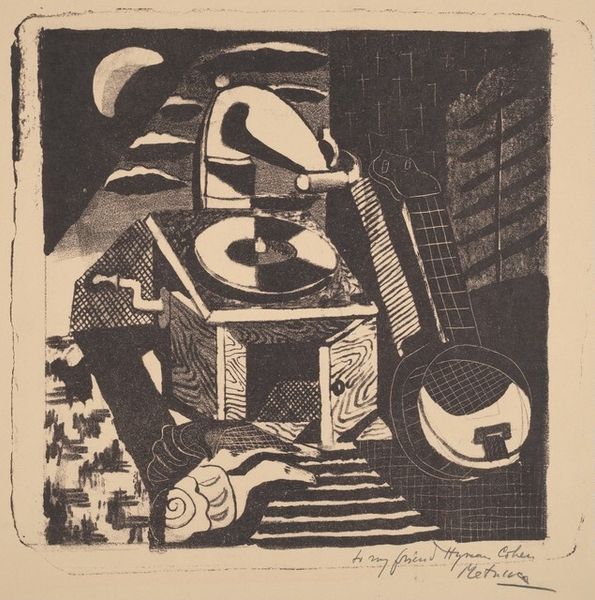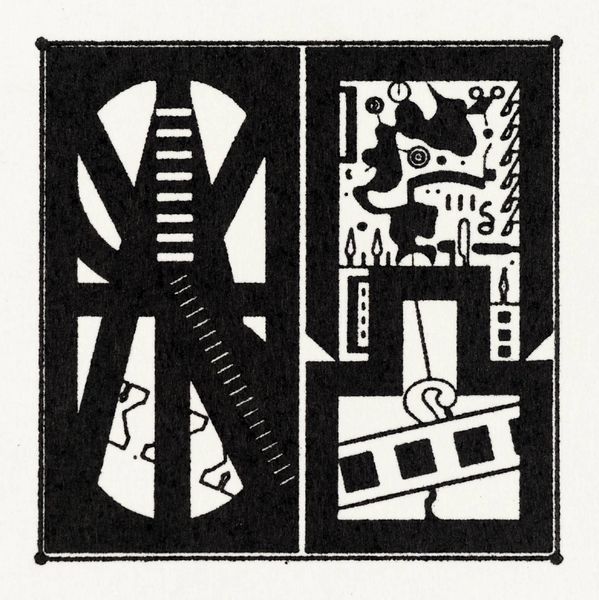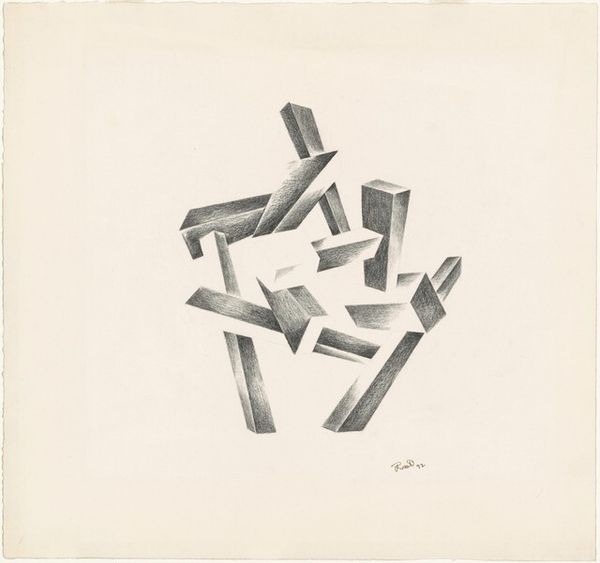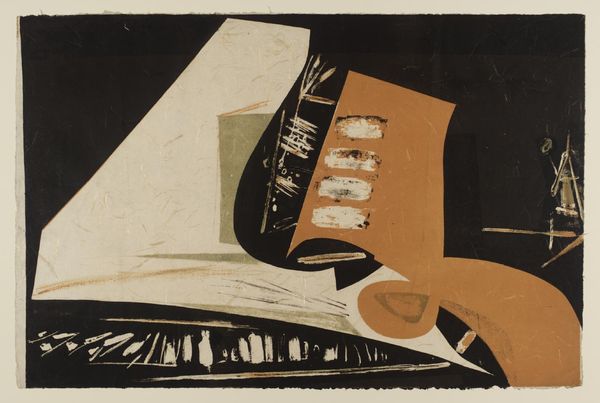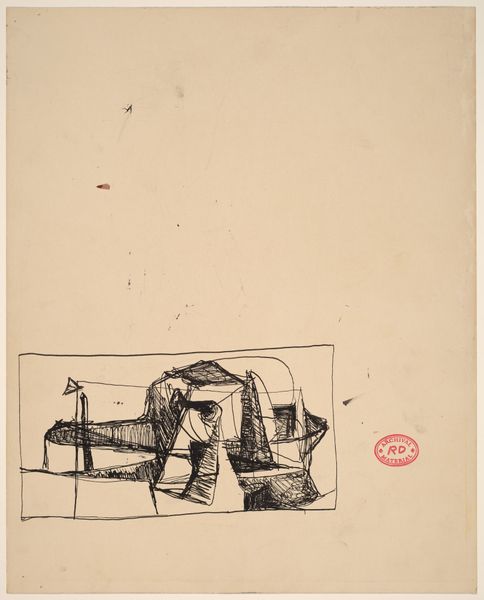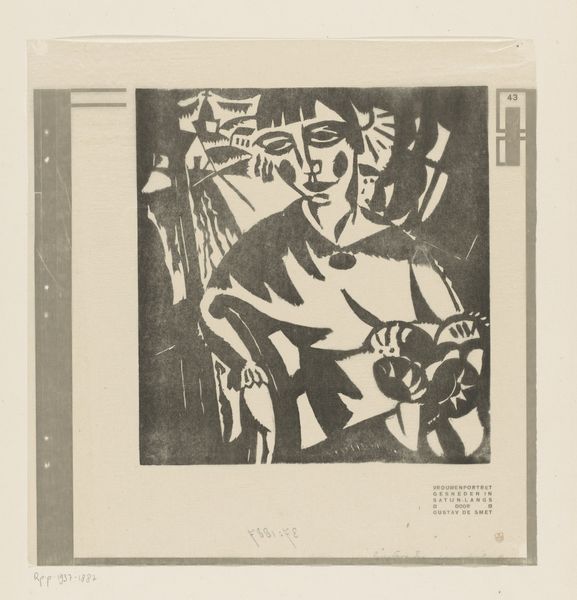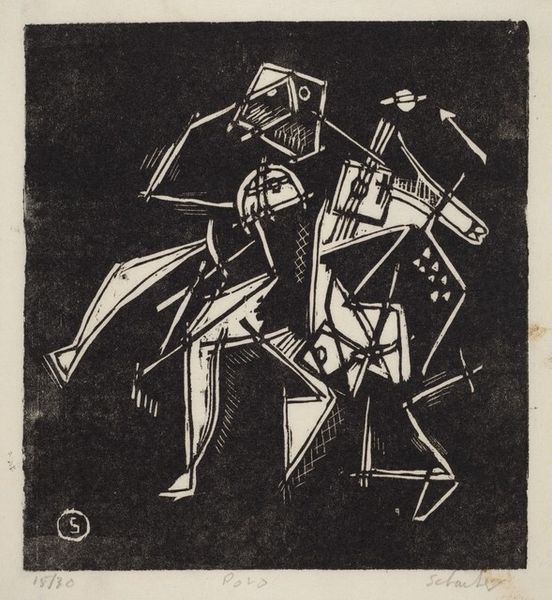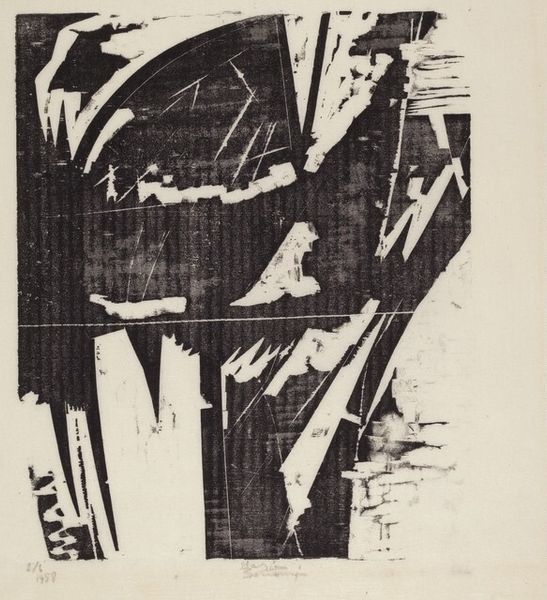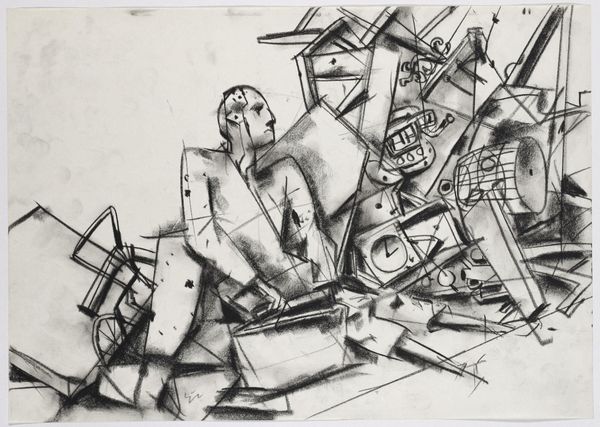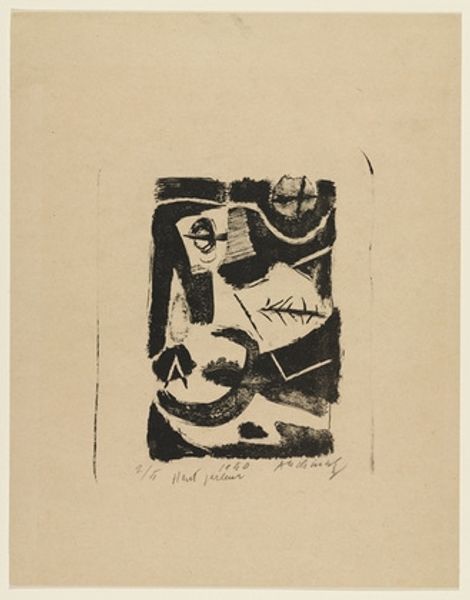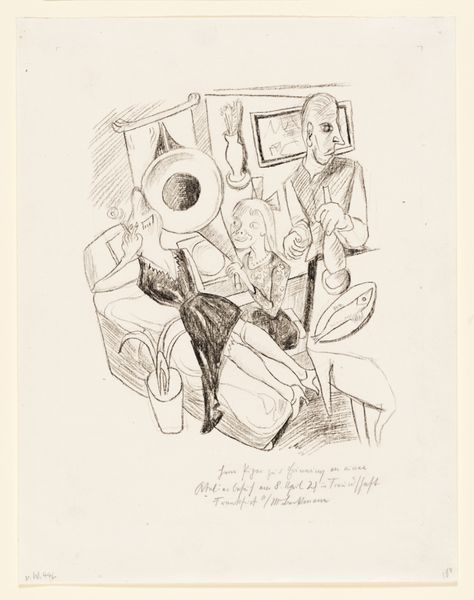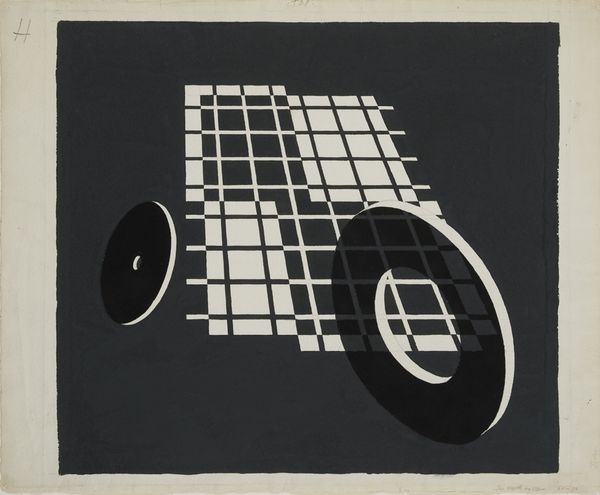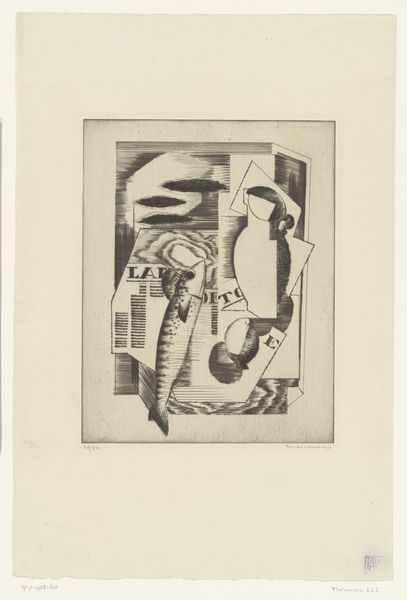
print, linocut
#
ink drawing
# print
#
linocut
#
geometric
#
modernism
Dimensions: Sheet:168 x 168mm
Copyright: National Gallery of Art: CC0 1.0
Editor: Here we have Calvin Burnett’s “Still Life,” created in 1942. It's a striking linocut print. The geometric shapes and stark contrast really give it a sense of drama, even though it’s depicting everyday objects. What strikes you most about this piece? Curator: It's interesting how Burnett uses such a traditional genre like "still life" and infuses it with a distinctly modernist sensibility. Linocuts were popular in the 30s and 40s because they were cheap and allowed for mass production, particularly by artists affiliated with social movements. Editor: So, its creation may have been linked to a broader artistic movement beyond just personal expression? Curator: Exactly! And think about the objects he chose: a guitar, a book, a hat slung over a chair. What do these objects, common in a still life, communicate in this context, made during wartime? Does it invoke feelings of home and leisure? Editor: I hadn't considered that. Maybe it's a commentary on what's absent or yearned for during that period? Like a visual poem. Curator: Precisely. Art rarely exists in a vacuum. Museums often presented still lives as documents of a wealthy lifestyle, but Burnett inverts this assumption and presents ordinary belongings charged with meaning. Considering Burnett's own experience as an African American artist in this period, what does it mean to portray these particular objects? Editor: I think this piece prompts more questions than answers for me. Curator: And that's often the most rewarding kind of art. Thinking about the intersection of materials, imagery, and social context can bring us to new interpretations of art history. Editor: I'll definitely be looking at linocuts in a different light now.
Comments
No comments
Be the first to comment and join the conversation on the ultimate creative platform.
